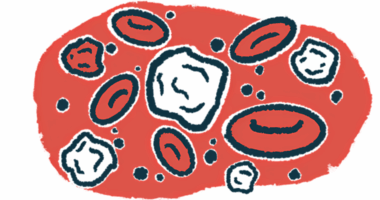First-in-human trial of hemophilia B treatment BE-101 starts dosing
Developer: Cell therapy has potential for 'transforming the treatment landscape'

For the first time, as part of a U.S. clinical trial, the cell therapy BE-101 has been administered to someone with hemophilia B.
Be Biopharma, the company developing BE-101, announced the dosing of the first participant in a first-in-human Phase 1/2 clinical trial called BeCoMe-9 (NCT06611436). The trial is assessing the safety and preliminary efficacy of a single dose of BE-101 in as many as 24 adults with moderately severe to severe hemophilia.
Men with hemophilia B currently on prophylaxis, or preventive treatment, are being enrolled at study sites in Michigan, Minnesota, and Washington.
“Dosing the first participant in our first-in-human study of BE-101 marks a significant milestone for Be Bio and for people with hemophilia B. … BE-101 is our first BCM [B-cell medicine] to enter the clinic, and it holds the promise of transforming the treatment landscape for hemophilia B,” Joanne Smith-Farrell, PhD, president and CEO of Be Bio, said in a company press release.
Hemophilia B is caused by the lack or dysfunction of clotting factor IX, known as FIX, a protein that normally helps the blood to clot. The lack of functional FIX puts people with this type of the blood disease at a high risk of experiencing symptoms such as excessive and prolonged bleeding.
Standard treatment for hemophilia B involves factor replacement therapy, where a functional version of FIX is infused into the bloodstream to help normalize clotting. These therapies generally require regular infusions, however, and aren’t 100% effective at preventing bleeds.
Mark Reding, MD, director of the Center for Bleeding and Clotting Disorders at the University of Minnesota, noted that, “despite recent advancements, many people living with hemophilia B require frequent infusions of FIX and continue to experience regular bleeding events that can lead to long-term consequences such as chronic pain and irreversible joint damage.”
Trial first testing 3 potential dosages of BE-101
BE-101 was designed to change the way hemophilia B is treated.
The therapy entails collecting a patient’s own B-cells — a type of immune cell normally responsible for producing antibodies — and engineering them in a way that they will be able to produce functional FIX.
Before being infused back into the patient, the modified B-cells are differentiated into plasma cells, which are specialized B-cells that can produce large amounts of antibodies within a short period of time. The general idea is to have the modified cells act as factories to produce FIX, reducing the need for factor replacement therapy infusions.
BE-101 has the potential to be an important new therapeutic option in hemophilia B by delivering sustained FIX levels and durable bleed protection, without the need for preconditioning, filling a significant unmet need.
Often, cell therapies require preconditioning — where medications like chemotherapy agents are used to destroy existing cells in the patient’s body to make room for the therapeutic cells. However, BE-101 is designed not to require these types of preparatory treatments, which often carry notable side effects.
According to Reding, “BE-101 has the potential to be an important new therapeutic option in hemophilia B by delivering sustained FIX levels and durable bleed protection, without the need for preconditioning, filling a significant unmet need.”
The experimental treatment is being tested in BeCoMe-9, a two-part trial. The Phase 1 part of the study is assessing three different doses of BE-101. The goal is to identify the dose required to achieve the desired FIX activity 28 days after infusion. The selected dose will then be further tested in the Phase 2 part of the trial.
The main goal of this first-in-human study is to evaluate the safety of BE-101. Patients will be monitored for safety and clinical activity for 52 weeks, or about one year, following dosing.







